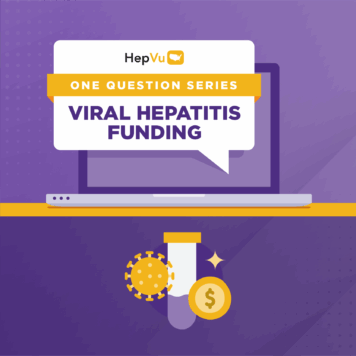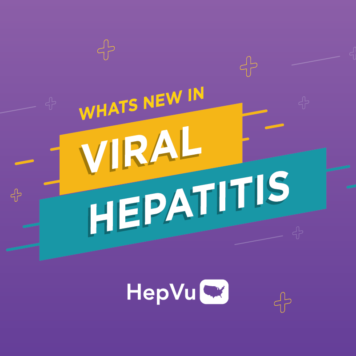Lance Toma, LCSW, is the CEO of the San Francisco Community Health Center (SFCHC).
Q: In the wake of the coronavirus pandemic, Asian Americans have been subjected to racist microaggressions, discrimination, and xenophobic portrayal by the media and policymakers. Can you speak to how these acts of discrimination can negatively impact the health outcomes of the Asian American and Pacific Islander community?
First of all, it’s just horrible. Not only are Asian Americans and Pacific Islanders (APIs) dealing with the impact of COVID-19 across the globe, but also the impact it has on us in our own country. Then, to add on this layer of unnecessary discrimination directed towards the API community is crazy to me. I have seen it have a direct impact. Unfortunately, our community has experienced a long history of discrimination and we know that any kind of discrimination in this way directly impacts both our physical and mental health and overall wellbeing.
In addition, I also feel like it has an impact on how we access health care, which has always been a longstanding issue. Now with this additional layer of attacks and blatant discrimination from leaders in our country labeling this virus as the “Chinese virus” or the “Wuhan virus,” it creates additional unnecessary burdens for our community. I think statements like these are broadly perpetuating the stereotype of the API community as foreigners, outsiders, and not a part of our country or integral to every aspect of our society. So yes, this directly and negatively impacts us and is something that now we have to encounter.
However, I do appreciate and know that some of my peers in San Francisco through the Chinese for Affirmative Action and San Francisco State University are coming together to document what’s happening on the ground. That helps us become aware of these situations and then act to stem this violence and discrimination.
I think the API community experiences a level of medical mistrust. When we talk about specific barriers to care that have risen because of COVID-19, we add them to the already existing barriers. I believe this certainly comes from mistrust, as well as care that’s not culturally or linguistically competent. It’s just so important to be able to access health care services in your own language or having providers whose cultural norms may inform how different members of the API community understand health and what it means to take care of themselves.
The lack of culturally competent care is one barrier, but then on top of it, there are structural issues around the issues of public charge. Currently, there is an added layer where immigrants and other undocumented folks will not access care or will avoid accessing any public benefit because they are concerned about their wellbeing and their ability to stay in our country or stay on a path towards citizenship. Whatever the reason, there are so many layers of fear that continue to impact our community and other communities of color, and that will, in turn, impact the health of our communities.
Q: Asian American, Native Hawaiian, and Pacific Islander communities are often overlooked in HIV education and outreach efforts, despite having some of the lowest rates of HIV testing. How can HIV care service providers ensure Asian Americans access care?
I know we must do more. We’ve been dealing with this for the last 30 years — really throughout the whole HIV epidemic. While our numbers are consistently low (2%), they still continue to increase, and I think we have to recognize this increase. I think we need to figure out how to continue to provide education and outreach and make sure there are easily accessible places for our community to get HIV testing from a culturally and linguistically competent provider
Additionally, stigma is such a huge issue within the API community. We see our community members are not getting tested consistently or avoid getting tested altogether because of the perceived stigma. It is because of the overarching stigma within our communities that my organization, in partnership with CDC, started National API HIV/AIDS Awareness Day to bring awareness to this issue.
Q: As the CEO of the San Francisco Community Health Center, can you speak to your ongoing efforts to ensure that Asian & Pacific Islanders are not excluded from treatment and healthcare services, specifically during the COVID-19 pandemic?
For some historical context, the San Francisco Community Health Center was formerly known as the Asian and Pacific Islander Wellness Center. Our organization was founded in the late eighties when HIV was ravaging communities in San Francisco and organizations like ours had to begin helping communities of color who weren’t getting culturally competent care around HIV prevention, care, treatment, and testing. That was the reason why my organization was founded and we have continuously been vigilant around ensuring that we, as we have continues to expand and grow, act as a community health center that cares for everyone here in the neighborhood of San Francisco, but specifically the LGBTQ community and people of color in general. However, we have consistently maintained our programs directed towards Asians and Pacific Islanders. This is a priority for us.
We have a whole outreach program to provide leadership development, peer support, HIV testing, education, and PrEP education. These programs help our community members understand why testing is so critical and why treatments like PrEP can be lifesaving. It’s a comprehensive array of programs that we continue to have here at the San Francisco Community Health Center that target the Asian and Pacific Islander community. I know that a handful of organizations across the country are doing similar programs, but we’ve seen that there are fewer and fewer targeted programs for the API community. That is why I think that May 19th is so important because it is a moment where we can come together and put out really strong messages to our communities and beyond that HIV is still an issue. We still need to pay attention. We need to talk about it more. We need to take care of ourselves and each other in our community.
As far as COVID-19, here at the San Francisco Community Health Center, as soon as COVID-19 hit our city and the shelter in place order was implemented in mid-March, we really had to pivot everything. But ultimately, we had to keep our doors open as a health center for anyone who needs any emergency and urgent care. We have a team here onsite that has been working nonstop, but we’ve also encouraged our staff to work remotely, which a lot of groups have done.
We have a group that targets Asian and Pacific Islander Gay and Bisexual Men and they have been continuing to meet virtually. Right now, what we’re seeing is that sheltering in place, while important, is creating a level of isolation that is dangerous for people’s mental health and feeling of connection. This program is called The Connection and it reaches out to provide support to API Gay and Bisexual Men.
All of our clients can continue to access resources from us. One example of how we’ve adapted is our street side, grab and go model – where we’re able to provide food and medication via curbside one-on-one support. Additionally, for more urgent issues, people can still access our medical and behavioral health teams and dental care right away.
A few programs have been harder to adjust, like our weekly drop-ins that are specifically designed for the Asian and Pacific Islander community living with HIV. Also, so much of our community is about being together, sharing food, sharing stories, and finding support in that way. I do see that COVID-19 is really preventing that level of really critical connection from happening. I am concerned about the impact that this is having for our clients and in our communities.
Q: Asian and Pacific Islanders are also disproportionately impacted by the viral Hepatitis epidemic. According to Centers for Disease Control and Prevention, Asian Americans and Pacific Islanders make up 5% of the total population in the U.S., but account for more than 50% of Americans living with chronic Hepatitis B. What are the structural barriers that drive this disparity and how can they be addressed?
San Francisco and the Bay area have been the source of many groups and campaigns working to increase Hepatitis B education, awareness, and testing for the API community. We have been a part of those Hep B Free efforts for years now. Right now, we want to make sure that folks are getting tested and screened. This is especially important for the community right now since Hepatitis B can be sexually transmitted and there is a continued impact of coinfection of Hepatitis C on the HIV community. We want to make sure that we are tackling them together comprehensively. Our providers and case managers make sure to educate our clients across the board. I still think we still have a while before we can ensure we are getting the right education and treatment to our communities.
Q: May 19th is National Asian & Pacific Islander HIV/AIDS Awareness Day and National Hepatitis Testing Day. In recognition of this day, what steps can policymakers and public health workers take at the local level to best prevent future HIV and Hepatitis infections in the Asian American and Pacific Islander community?
First, I think we still need to get testing out to our communities. We need to figure out how we can work with organizations across the country to make sure that there’s an awareness that our communities need to get tested. Additionally, we need to offer this in as many languages as possible because we are not a one size fits all community, which makes it complicated and it does take resources. I do think that’s what we’re always fighting – the need for more resources to do a multilingual and multicultural approach
I think the bottom line, though, is health care access. In my organization, we need to make sure that we are vigilant and work to continually improve our cultural competency. I think at one point many years ago we offered services in over 20 different API languages. That is still necessary, but unfortunately, right now, that’s not the case. We don’t offer as many languages due to a lack of resources. However, if somebody seeks out our care, we will work to get them the kind of language competent services they need. We have ways to do that, but now it looks different.
Ultimately, it is about how can we get folks into health care services. If they can get into health care, then it is about if they can trust the services, feel that they are getting quality care, and that their providers understand where they’re coming from in terms of their histories and their journeys. If we do this, I think we can start to address HIV, viral hepatitis, and a lot of other health issues. I feel like it has always been this whole-person care approach, which is what we have done with HIV and what we are trying to continue to offer.
HIV has taught us what we need to see across our health care delivery system — treating holistically. I hope that with the increased focus on testing for COVID, that the same message also translates through to encourage proactive testing and care generally.




